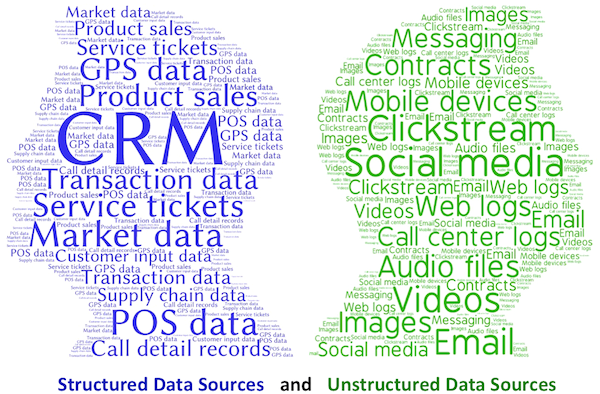There was a time when “customer experience” was defined by a combination of buyer persona attributes, market segment data and customer purchasing histories. However, in this new era of customer-centric digital business models, it takes more. To truly gain insights about customers requires data analytics about customer engagement, customer satisfaction, customer feedback, and customer behavior along the entire customer journey.
The bar has been raised, and to remain competitive, businesses need a complete view of the customer experience and the drivers behind customer sentiment and customer loyalty. CX analytics leverages customer data and customer analytics to measure the impact of customer service on customer satisfaction across multiple channels. The data is derived from the customer support metrics provided by the contact center and many other sources. - The analytics should cover every angle of interaction to provide a 360-degree view of your customer’s digital journey. The analytics enable actionable insights that will reduce customer churn, improve customer retention and customer loyalty and improve net promoter score (NPS).
Organizations need to know more about their customers than ever before. They need to track the customer’s digital footprint throughout the shopping experience. They need to understand the dynamics of buyer sentiment, for example. They need precise targeting for multi-channel marketing campaigns. And finally, organizations need the ability to predict product preferences and recommend "next best actions" to guide future purchases and improve customer engagement.
The digital experience is entirely comprised of data, and customer journey analytics provide actionable insight about customer needs and how well that experience is serving them. Increasing customer engagement is a primary objective of a CX strategy in organizations undergoing digital transformation. Part of those transformations is an increasing emphasis on customer data and customer experience analysis.
A new level of customer insight is empowering digital marketing engines to drive better business outcomes on several fronts, based on customer interaction and customer experience data:
- Sustained growth in customer acquisition
- Increases in revenue per customer
- Decreases in customer acquisition cost
- Reductions in customer churn
- Increases in customer satisfaction score
- Enhancements to product offerings
These outcomes present a compelling case for investing in initiatives that improve the digital customer experience. In order to achieve them, however, CMOs must place a high priority on ways to measure and optimize customer experience through integrated digital marketing, including the use of machine learning text analytics to understand customer sentiment metrics. Consider these findings from Gartner :
- In a survey of marketing leaders, two thirds say they are currently competing partly or mainly on the basis of customer experience, and 81% of companies plan to do so within two years
- In 2022, 23% of the CMOs feel customer understanding and experience management as their capability gap[1].
- In a report on customer experience trends, nearly half the surveyed organizations say they can track the financial benefits of customer experience projects.
- A similar percent believe that they can calculate a positive relationship between customer experience or satisfaction and a financial or business impact.
- However, going forward, only one third are very confident or somewhat confident that they could project the business value of proposed customer experience improvement initiatives; 42% were neutral and 24% were doubtful.
These results indicate that organizations are in fact using CX analytics to reveal customer insights about the relationship between customer experience and business outcomes, however they are less able to use predictive analytics to evaluate whether their plans for the future are going to produce a business value.
We are witnessing the rebirth of the CMO as a digitally savvy and customer-centric role that leads the transformation of marketing from an art to an exact science. A key ingredient for driving this transformation is the evolving area of customer experience analytics.
What is Customer Experience Analytics (CX Analytics)?
Digital customer experience analytics includes all of the metrics that track and measure relevant data about the customer journey during every stage of the customer lifecycle. Customer experience data analytics guide the digital marketing agenda and are used to prioritize the use of marketing investments, but are also used to monitor the impact of contact center interactions and customer service initiatives.
While customer journeys vary based on industry and organization (even to the level of customer segments), a typical journey consists of the following stages:
 Customers need to learn about the offering – typically through SEO, events, advertising and other inbound activities. They need to select the product or service through on site navigation and search, then make their purchase, use the product, maintain it and if satisfied hopefully recommend to others.
Customers need to learn about the offering – typically through SEO, events, advertising and other inbound activities. They need to select the product or service through on site navigation and search, then make their purchase, use the product, maintain it and if satisfied hopefully recommend to others.
Multiple technologies and departments beyond marketing support these stages, and each customer experience technology has associated data analytics to measure impact and effectiveness. Digital experience analytics helps to monitor and maintain the customer experience ecosystem and provide signals for problems or opportunities for improvement at each stage.
What are the data sources?
To better understand your organization’s potential use of customer experience analytics, start by asking, “What kind of CX analytics do I want, and where do I find the data?” In an article in Forbes (Unstructured Data: The Other Side of Analytics), Dr. Stephen Andriole wrote about the need to combine structured and unstructured data sources, particularly for predictive analytics.
Structured data tends to be more operational in nature and provides analytics associated with customer attributes, transactions, product sales, and service histories.
Structured data answers the “what” questions such as:
- What kind of customers purchased your products?
- What purchases did they make?
- What products are selling most quickly?
- What service problems are the customers having?
Unstructured data tends to be more qualitative and provides CX analytics associated with buyer behavior and sentiment. It leverages social media feeds, customer feedback, clickstream data, website data, and call center logs relating to customer support. Google Analytics is a useful tool to analyze web behaviors and social media interactions.
Unstructured data answers the “why” questions, such as:
- Why did buyers make a purchase?
- Why did they choose one product over another?
- Why do buyers prefer to interact via one channel versus another?
- Why did customers defect to the competition?
The combination of structured and unstructured data provides a complete view of the digital customer experience.

But the noisy nature of unstructured data requires the ability to find the signals hidden within it, and then the ability to combine the two data sources in a way that produces meaningful output.
This is where marketing, sales, service, and IT stakeholders must come together to build a common understanding of the business challenges and the IT mission to meet those challenges. Forging an alliance and alignment of business and technology stakeholders is critical to realizing your company’s goals for an enhanced and differentiated customer experience. In an environment of cost pressures, it will be important to build a strong business case for future investments.
What are the metrics?
Another way to look at data, in addition to considering content from structured and unstructured sources, is from the perspective of metrics about the experience itself and metrics about processes or operations that enable the experience. Every stage of the customer journey can be instrumented and measured. Identifying the most important KPI’s and establishing baselines is the beginning of the process.
Example customer experience metrics:
- Search & Navigation: top searches, search exit rate, saved searches
- Engagement & Conversion: average visit duration, number of pages viewed per visit, conversion rate
- Content & Data Quality: tagging fill rate, never found rate, content downloads
Example operational metrics:
- New product launch: Product onboarding into ecommerce and ERP systems, time to campaign launch, new product support incidents
- Support operations: time per incident, first time call resolution, call deflection
- Supply Chain Management: Time to onboard new supplier, supplier data quality, on time delivery rates
CX metrics in particular need to be contextualized. For example, Google Analytics might indicate that a page has a high bounce rate – customers land on the page from a search (either on site or web search) or navigate to a page, only to leave immediately. This metric – high bounce rate – could be caused by a range of issues. These might include:
- Content does not meet the needs of the user
- Information on the page was confusing
- The path to the content was not clear
- The user was in the wrong place
- The user experience led them down the wrong path
- Navigational labeling is misleading
- Search returned the incorrect results
- The user was not clear on what they wanted
- The user found exactly what they wanted and picked up the phone to order from their rep
The root cause analysis should consider the rest of the customer data and what action they took next. Perhaps a customer effort score indicates that the page was confusing or cluttered or contained distracting or irrelevant information or graphics. In that case, a revised web page design would be warranted.
Customer Service
Sometimes the customer service function is not well integrated into CX strategy and planning. When the digital experience cannot provide what a customer needs, or is unable to solve a problem or answer a question, users will often reach out to the contact center. Customer experience analytics needs to be integrated with call center customer service metrics to understand where the digital experience is breaking down and is forcing the customer to reach out to the contact center, which is an expensive channel for customer support. The reason a customer reaches out to the contact center channel is because something about the digital channel is broken. Improving knowledge access on the website will frequently allow users to get their answers from the digital channel, thereby deflecting calls from a live agent. If possible, the customer’s web activities should be part of the support ticket so that later CX analyses can consider the catalyst for a call, assuming the customer was on the site prior to calling) .
How to Take Action
Getting the most value from customer data and customer experience analytics requires a well-defined vision of the insights you want and the technological sophistication you will need to produce them. The best approach is to combine this future vision with a thorough self-assessment of your company’s current state and an understanding of the current marketing technology stack. This process will help to identify gaps that must be bridged to realize the original vision.
Once you identify key metrics and data sources, you will need to determine the infrastructure requirements to ingest, store, process, and serve up the data. Unstructured data will likely require big data technology, operations and management. The integration of structured and unstructured data will require information architecture and management (taxonomy, metadata, data quality and governance) and the software to perform and analyze customer experience analytics.
In addition to these technical challenges, there may also be organizational challenges to overcome. Do you have the right people, skill sets, and processes to achieve an alignment of purpose and an alliance for taking action? If not, look for experts in the field to help you jumpstart the learning curve and to manage this organizational change.
Finally, formalize a roadmap that captures your current state, future vision, and path to success along the dimensions of people, process, technology, and content. This initiative will serve as a vehicle for building consensus and involvement and for taking action in a purposeful way.
[1] https://10xds.com/news/gartners-annual-cmo-spend-survey-2022/

